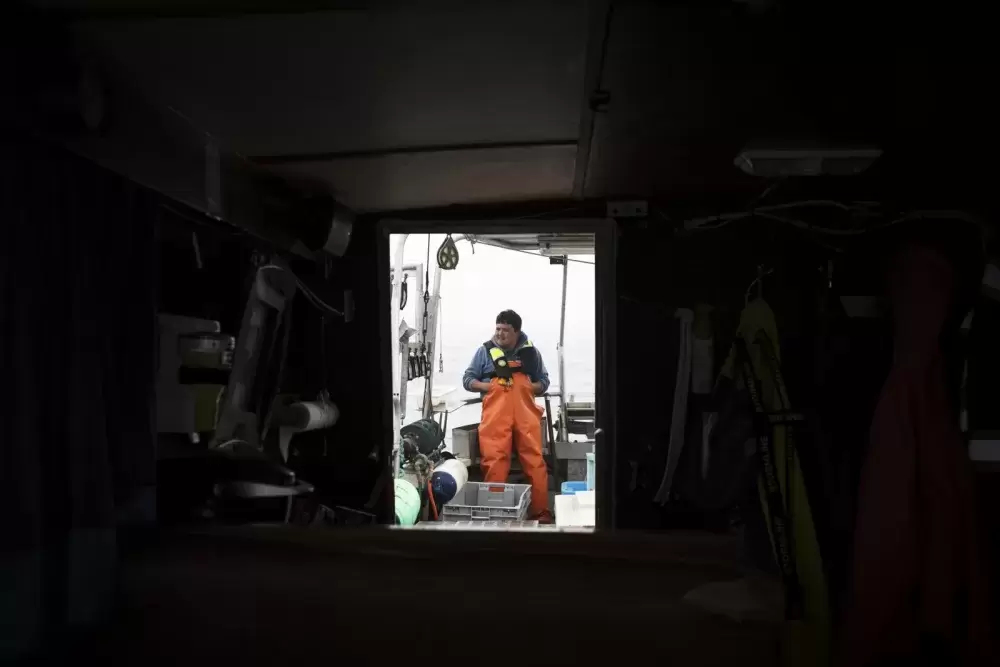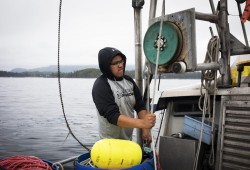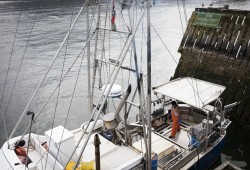More closures are expected this year to commercial salmon fisheries, while the DFO ramps up a program encouraging fishers to leave the industry – part of an effort to thin out the fleet of boats licenced to harvest dwindling Pacific salmon stocks.
This also applies to First Nations, as Fisheries and Oceans Canada is preparing to offer money for the retirement of commercial licences, with opportunity to acquire access to non-salmon industries. The buy-back program is set to start in the spring, an integral part of Canada’s $647-million Pacific Salmon Strategy Initiative that aims to “stem historic declines in key Pacific salmon stocks and rebuild these species to a sustainable level,” according to the DFO.
Last summer the federal department closed 60 per cent of commercial salmon fisheries on the B.C. coast, one month after former Fisheries Minister Bernadette Jordan announced the strategy in June 2021. Now longer-term closures are expected, according to information recently provided to the Nuu-chah-nulth Council of Ha’wiih Forum on Fisheries.
“There will be no additional opportunities provided to a different commercial gear group or the recreational sector due to these closures,” states the PSSI document.
The DFO paper notes that many commercial salmon licences are not being used under the current conditions, and that cutting down on harvesting through voluntary “licence retirement” could help where there is a high risk of boats impacting “stocks of concern”.
“Part of that is also creating more viable, more sustainable fishing opportunities too,” said Sarah Murdoch, PSSI senior director, on the topic of thinning out the fleet of commercial boats. “We also want to work with individual fishers who may choose to leave the industry given the forecast around the future and make sure that they can retire with dignity.”
The salmon strategy paper notes that this voluntary licence retirement approach has been used since 1996, cutting the commercial fleet by almost 50 per cent.
“Among the options to be explored are shifting to more selective fishing gear (to avoid stocks of concern), or, where available, to other non-salmon species,” notes the PSSI document. “The department will consult with First Nations on opportunities to transition to more selective fishing approaches and gear, or exchanging their salmon access for access to non-salmon species and licences, where feasible.”
In response to an invitation from DFO, the Council of Ha’wiih issued its own priorities to help save the salmon stocks that Nuu-chah-nulth communities have subsisted on for countless generations. This list includes the increased use of genetic tools to better understand how young salmon survive across the West Coast, improved information that monitors adult escapement, and identifying offshore areas where opportunity exists for Nuu-chah-nulth rights-based fisheries.
“There’s opportunities for coho offshore,” said Jim Lane, Uu-a-thluk’s deputy program manager. “Canada does have a lot of access to them, but the department has been reluctant to put any effort into finding out what those potential fisheries could be…these things are swimming by and you’re losing opportunity.”
The council also pushed for better monitoring of recreational fisheries, which still allow anglers to throw adult salmon back after they’ve been hooked, instead of applying these catches to a sports fisher’s quota.
Lane noted that this is the only fishery that permits this practice.
“Right now, they can throw back as many fish as they want,” he said. “The amount of discarding in the recreational fishery - even the data that we have, which is self-reported - it’s pretty significant, and it leads to a lot of mortalities.”
For this reason, the Council of Ha’wiih agreed that sports fishers should be required to retain all legal-size salmon that they catch.
“It’s not trying to stop anybody from fishing; it’s to manage what we have left better, because if we don’t, my grandchildren won’t have anything,” stressed Nuchatlaht Councillor Archie Little.
“We know there needs to be a focus on monitoring and more conversations around that,” agreed Murdoch. “How we manage individual anglers the same way as charters and lodges is just out of date.”
Enhancing the production of salmon in hatcheries is another goal of the Pacific Salmon Strategy Initiative, which Murdoch called “conservation-based enhancement”.
“That will include actually building new capacity and new hatchery facilities,” she said. “Right now we’ve identified a big gap in chinook and sockeye in the upper Fraser.”
But these fish need to be marked to differentiate them from salmon raised in a natural environment, emphasized Lane, as Uu-a-thluk works to better understand threats to wild stocks.
“If they’re not marked and you can’t separate them from wild, it becomes more of a problem,” he said. “It is mostly hatchery fish that people are catching.”
The lack of a major hatchery in Clayoquot Sound has further threatened fisheries in the region, said Andrew Jackson, fisheries manager for the Tla-o-qui-aht First Nation.
“For us in Clayoquot Sound, it’s the collapse of the fishery,” he said. “It’s not a decline.”
Jackson believes his First Nation’s territory needs better recognized protection to preserve what salmon are left for the community.
“We need to have a special management zone,” he said. “That’s the only way we’re going to keep our food security.”
While the federal department has reiterated its commitment to working collaboratively with First Nations, representatives on the Council of Ha’wiih pointed to the gap that remains between the science that DFO specializes in and the traditional knowledge that guided Nuu-chah-nulth tribes for thousands of years.
“What we want to do is have some of our First Nations knowledge implemented into these ideas and plans,” said Mike Maquinna, Tyee Ha’wilth of the Mowachaht/Muchalaht First Nation. “I would hope that, in all fairness, once we get down to discussions the department of fisheries and oceans started to see how First Nations can help out the resource that we feel in our history, [that] in our lifetime was in abundance.”
Huu-ay-aht Chief Councillor Robert Dennis spoke of a story he heard from his nation’s late Chief Louie Nookemis in 1964. It speaks of the traditional practice of bringing salmon back to the sea for regeneration.
“’Oh mother, when you eat the salmon, don’t you ever throw its bones back into the fire and burn it’,” recalled Dennis. ‘You must never burn the fish bones; if you do, the salmon will become no more, they will not come back to the rivers.’”
Part of the problem is the separation of Nuu-chah-nulth people from their territorial resources, he explained.
“Because Nuu-chah-nulth people have moved away from the land, we are no longer fulfilling our responsibility to ensure the salmon become plentiful,” said Dennis.









